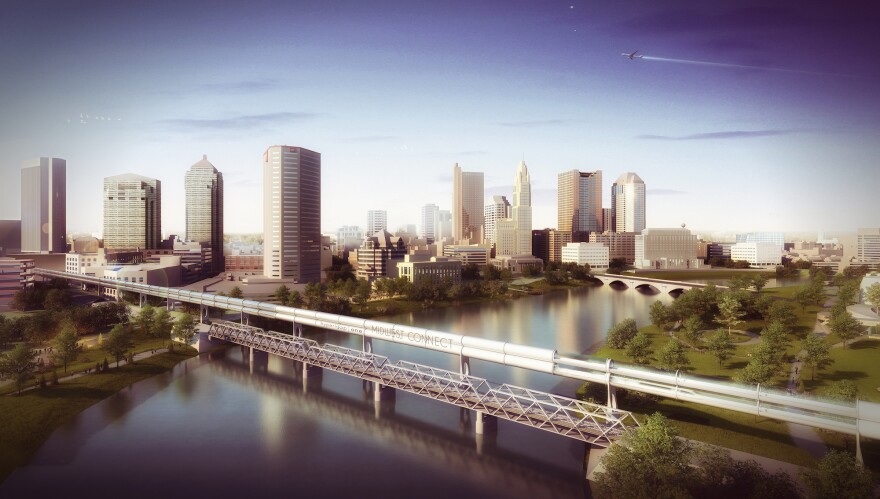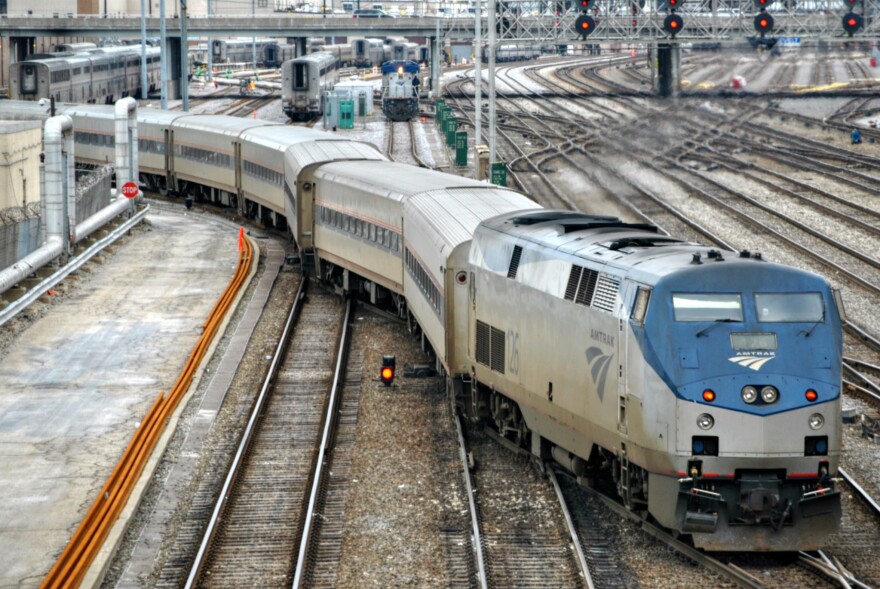Train travel may seem like an outdated mode of transportation to some, but it still has many advocates. Countries in Europe and Asia continue to invest in train infrastructure while support in the U.S. has faltered. Many cities, including Columbus, no longer have passenger rail service at all.
That led Megan Steeva to ask WOSU's Curious Cbus project, “Why is Columbus the largest metropolitan area in the country without Amtrak service? And when did we lose rail service in the first place?"
Rail service began in Columbus in the 1850s. In 1897, construction of the majestic Union Station was completed and for the next 80 years, travelers were served by several railroads.
Amtrak took over the Pennsylvania Railroad route known as the “Spirit of St Louis” in 1971 and later renamed it “The National Limited.” That line rain through New York, Philadelphia, Pittsburgh, Columbus, Dayton, Indianapolis, St. Louis and Kansas City.
By that point, though, ridership was on the decline and decaying tracks led to frequent delays in service.
Then, in the October of 1976, a large section of the arcade at Union Station was demolished, to make way for the Greater Columbus Convention Center. The station continued to serve rail passengers for a time, but that was the beginning of the end.
Finally, due to federal budget cuts and a lack of profitability, Amtrak discontinued The National Limited in 1979. Columbus hasn’t had passenger rail since.

As for why Columbus still doesn’t have passenger service 40 years later, that seems to be a matter of public support and political will.
A decade ago, there was a big push to bring passenger rail back to Columbus with the so-called "3-C" corridor. The plan would have connected Cincinnati, Columbus and Cleveland.
Democratic Gov. Ted Strickland pushed for the new line, with $400 million from the federal government allocated for the project. But in the 2010 election, Ohioans voted out Strickland in favor of Republican John Kasich.
Kasich killed the plan over concerns that the line would be too expensive and wouldn’t draw enough riders. Those $400 million were sent to other states for their transportation projects.
Though that plan failed, officials are considering two new plans to bring high-speed travel to town. One is an Amtrak high-speed passenger train line between Chicago and Columbus, with stops in Indiana and Ohio.
The other, more futuristic idea is the Hyperloop, a new form of transport where pods carrying freight or passengers travel on magnetic tracks inside of vacuum-sealed tubes. The Hyperloop could potentially reach speeds exceeding 500 mph.

In 2017, Columbus was named a finalist in a global search for possible locations. A proposed route from Pittsburgh to Chicago through Columbus is currently being studied, along with more traditional rail through the same path.
Though you won’t be able to buy a ticket anytime soon, there is hope for Central Ohioans who want to ride the rails again.
Do you have any questions about transportation in Central Ohio? Use the form below to ask Curious Cbus.
_






